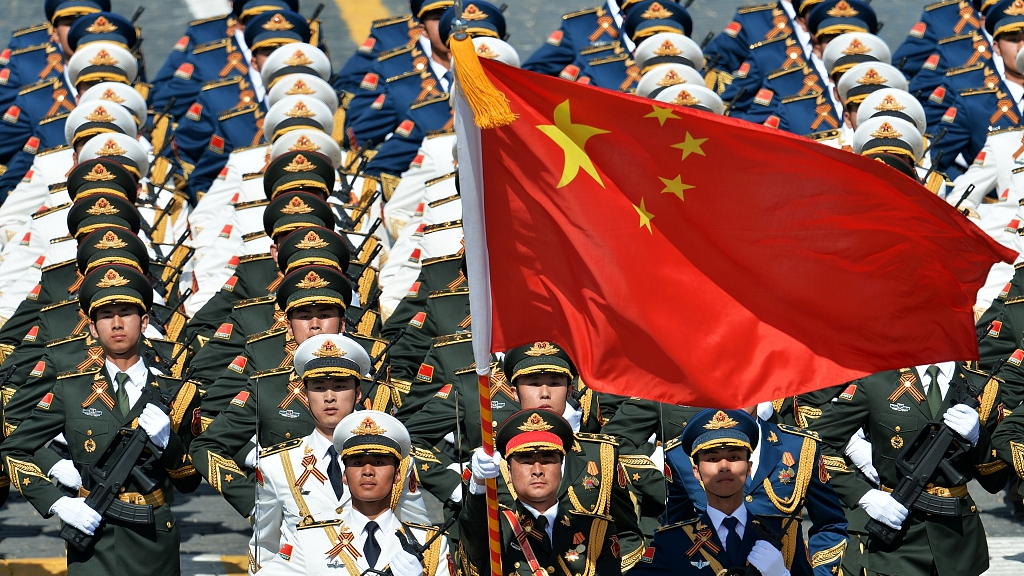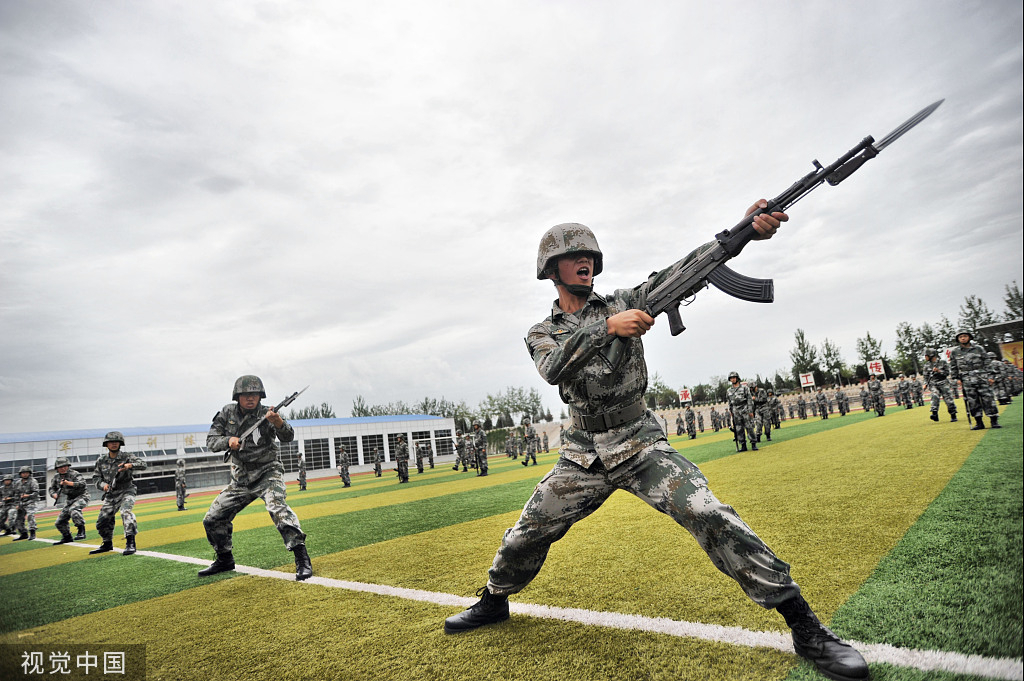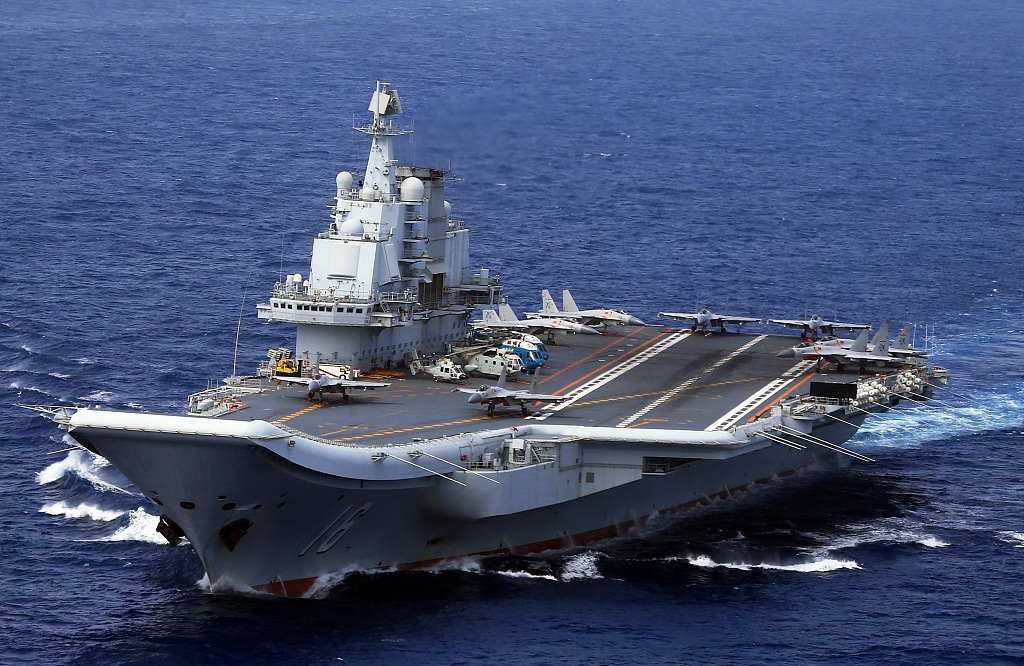

Editor’s note: Rabi Sankar Bosu is an Indian freelance contributor to Chinese media outlets, writes about Chinese politics, social and cultural issues, and China-India relations with special interest on the Belt and Road Initiative. The article reflects the author's opinion, and not necessarily the views of CGTN.
On 24 July, 2019, China’s Ministry of National Defense released a lengthy 27,000-word white paper, titled "China’s National Defense in the New Era," which has drawn worldwide attention for a host of reasons.
China's defense white paper is usually very significant for the Chinese nation since it is a reflection of the country’s overall national defense strategy and sets new priorities for strengthening the People’s Liberation Army (PLA) in the years ahead. At the same time, the 27,000-character white paper holds much significance for the world as it offers useful insights into Chinese military's responsibility to advance global security and peaceful development.
It should be noted here that the Chinese government released its first national defense white paper in 1998. This is the 10th and the first multipurpose defense white paper published after the 18th National Congress of the Communist Party of China in 2012. The detailed contents of the 51-page white paper are divided into six sections.

Chinese soldiers practicing their skills in Beijing, July 22, 2014. /VCG Photo
Without doubt, the breadth and depth of this China's defense strategy was rarely seen in the last white paper in 2015 as the just released white paper highlights China's defense policies in the new era, and explains the aims, basic principles and significance of China's defense and armed forces to the world.
More importantly, the new Chinese white paper is consistent with Chinese President Xi Jinping’s strategy of building a powerful military with Chinese characteristics accentuated at the 19th National Congress of the Communist Party of China (CPC) in October two years ago: “The CPC will strive to fully transform the people's armed forces into a world-class military by the mid-21st century.”
The significance of this white paper is even greater since China is faced with fast-changing and increasingly complex domestic and international issues in the last few years. The election of Donald Trump to the U.S. presidency and a post-Brexit Europe put China in a colossal position of global leadership. But this new China with its massive economic, technological and military strength will never seek hegemony or engage in expansion "no matter what stage of development it reaches."
There is enough evidence to suggest that the 2019 Chinese defense white paper is a clear response to the December 2017 National Security Strategy of President Donald Trump and Secretary of Defense Jim Mattis’s 2018 National Defense Strategy. Those two official U.S. reports painted China as the primary strategic competitor of the U.S. military power in the western Pacific as Mattis declared that “great power competition, not terrorism, is now the primary focus of U.S. national security.”
But the fact is that China’s national defense policy, which is defensive in nature, is never seeking hegemony, expansion or spheres of influence. As the white paper states, “China firmly believes that hegemony and expansion are doomed to failure, and security and prosperity shall be shared.” More importantly, China’s national defense expenditure has been reasonable and appropriate.
The Chapter V of white paper, titled “Reasonable and Appropriate Defense Expenditure” reported that from 2012 to 2017, the ratio of China's defense expenditure to GDP was about 1.3 percent – the lowest among the five permanent members of the UN Security Council, according to the white paper. On the other hand, the U.S. is spending 2.7 times more of its economy (3.5 percent of GDP vs. 1.3 percent) on military forces, and nearly twice the percentage of its total government expenditures (9.8 percent vs. 5.3 percent).

China's Liaoning aircraft carrier. /VCG Photo
The white paper’s section on “China’s Defensive National Defense Policy in the New Era” reiterated China’s stance on the independence-leaning Taiwan. Upholding the one-China principle, it vows to use force to prevent and defeat any attempts at “Taiwan independence” giving a strong warning to the separatists by noting that “The PLA will resolutely defeat anyone attempting to separate Taiwan from China and safeguard national unity at all costs.”
The new white paper hails PLA's historic contributions to the country and the people since its establishment on August 1, 1927. Since the world is witnessing several changes which were never seen in a century, it flags the country's military force to be on alert, and combat ready. Over the past few years, the United States has been deliberately creating tensions in China's territorial sea namely, in the East China Sea, the South China Sea and the Yellow Sea, under the pretext of “freedom of navigation”.
The latest white paper sends a powerful warning to the U.S. by highlighting that, “Countries from outside the region conduct frequent close-in reconnaissance on China by air and sea, and illegally enter China’s territorial waters and the waters and airspace near China’s islands and reefs, undermining China’s national security.” As such, the white paper makes it clear that the PLA must be prepared to use “all necessary measures” to safeguard national unity and territorial integrity.
The white paper also reminded the world about China's armed forces’ glorious contributions and cooperation with other countries over the nine decades. The PLA is actively taking part in many missions such as international peace-keeping, anti-piracy, humanitarian aid, disaster relief and other international activity.
The Chapter III of white paper notes that, “In August 2017, the PLA Djibouti Support Base entered service. The base has provided equipment for the maintenance of four escort task groups, offered medical services for over 100 officers and sailors on board, conducted joint medical exercises with foreign militaries, and donated over 600 teaching aids to local schools. When the security situation in Yemen deteriorated in March 2015, a PLAN escort task group sailed to the Gulf of Aden, berthed for the first time directly in an engagement area.”
Attending the 90th anniversary of the founding of the PLA at Zhurihe training base in north China's Inner Mongolia Autonomous Region on July 30, 2017, President Xi Jinping said, “Enjoying peace is a bliss for the people, while protecting peace is the responsibility of the People's Liberation Army.”
Facing difficulties, problems and challenges, with the support of more than 1.3 billion Chinese people and the CPC, China’s army is resolutely moving in the right direction of translating the “Chinese Dream” of national rejuvenation. The white paper truly highlights the essential relationship between the Chinese defense forces and the peace and stability of the world. It is clear that China is always the keeper of global peace.
(If you want to contribute and have specific expertise, please contact us at opinions@cgtn.com.)

Copyright © 2018 CGTN. Beijing ICP prepared NO.16065310-3
Copyright © 2018 CGTN. Beijing ICP prepared NO.16065310-3